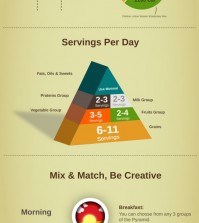- Make It Yourself Lavender Heart-Shaped Bath Bombs!
- 20 Things You Never Knew About “Down There”
- 12 Best Foods For Those Suffering From Arthritis Pain
- 12 Personal Hygiene Mistakes Almost Everyone Makes (Mom Never Told You About #4!)
- 15 Medicinal Plants And Herbs From The Cherokee People
- 12 Mind-Blowing Benefits Of Drinking Coconut Water During Pregnancy
- 12 Outstanding Winter Foods That Won’t Fatten You Up Like A Christmas Turkey
What Is The Rainbow Diet? How Does It Work?
Red Foods
Red fruits like raspberries contain phytochemicals which give them their bright red color, but that is not the only purpose these compounds serve. These phytochemicals like anthocyanins and lycopene also offer many benefits to humans, such as healthier, clearer skin, a lower risk of heart disease, stroke, and certain types of cancer as well as antioxidant properties.
Some examples include: Pomegranates, raspberries, strawberries, tomatoes, watermelons, and red peppers.
Yellow and Orange Foods
Yellow and Orange fruits and vegetables offer their own nutritional goodies. This is due to the presence of carotenoids, the chemical compounds which give them their color. You’ve probably heard that eating carrots can help improve your vision in low light conditions. This is due to beta-carotene, a type of carotenoid. These compounds also contribute to a lower risk of developing cancer, healthier skin, and a stronger immune system.
Some examples include: Squash, mangos, carrots, sweet potatoes, oranges, lemons, peaches and yellow peppers.
RELATED: 13 Fact-Sounding Food Myths You May Still Believe In!
Continue to Page 3

































